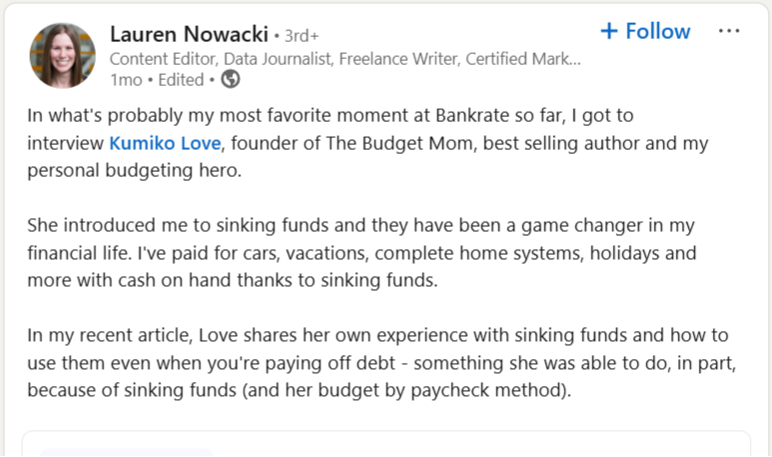Sinking Funds: A Smart & Often Overlooked Investment Strategy
In today’s world of endless investment options, choosing the right one for your future can feel overwhelming. Many investors, especially younger generations, tend to focus on short-term goals rather than long-term strategies. This shift towards more immediate financial objectives has sparked a growing interest in investment avenues that offer flexibility, control, and transparency, like the Sinking Fund.
What is a Sinking Fund?
A sinking fund is a strategic investment approach where you set aside a specific amount of money regularly, usually monthly, towards a particular financial goal. Unlike traditional savings, this method is goal-oriented and hyper-focused, helping you reach your objectives without distraction. Whether it’s for a vacation, a new gadget, or future taxes, sinking funds allow you to save with a clear purpose in mind.
Why Are Sinking Funds Gaining Popularity?
Younger generations, particularly Gen Z and millennials, are gravitating towards short-term, goal-driven investment options. This demographic values having control over their finances and prefers investments that are transparent and easily manageable. Sinking funds cater to this need by breaking down larger financial goals into smaller, more trackable milestones.

Additionally, in today’s economic climate with rising living costs, young adults are turning to sinking funds as a way to avoid accumulating credit card debt while still saving for their desired lifestyle.
Key Insights from Recent Surveys
- Goal-Based Saving: A survey by CASHe titled The Financially Independent Millennial revealed that 31% of millennials favor goal-based saving, indicating a preference for structured financial planning — a key characteristic of sinking funds.
- Automated Savings Tools: According to The Fin One: Young Indians’ Saving Habits Outlook 2024, 68% of young Indian investors regularly use automated savings tools to create multiple savings buckets, making it easier to track progress towards specific goals.
- Spendvesting: The Multipl report highlighted a growing trend among Indian millennials and Gen Z, known as "spendvesting" — a blend of spending and investing for lifestyle goals like travel or gadgets. This aligns perfectly with the principles of sinking funds.
How Sinking Funds Differ from SIPs or Emergency Funds
While Sinking Funds share similarities with Systematic Investment Plans (SIPs) and emergency funds, they serve different purposes. SIPs typically focus on long-term wealth generation, while sinking funds are more goal-oriented and focused on saving for short-term needs. An emergency fund, on the other hand, is an essential safety net for unexpected expenses and is not necessarily tied to specific financial goals.
|
Feature
|
Sinking Fund
|
SIP (Systematic Investment Plan)
|
Emergency Fund
|
|
Purpose
|
To save for a specific future expense (e.g., travel, gadgets, wedding)
|
To invest regularly in mutual funds for long-term wealth creation
|
To cover unexpected financial emergencies (e.g., job loss, medical bills)
|
|
Duration
|
Short- to medium-term (few months to 2–3 years)
|
Long-term (5+ years)
|
Long-term, but always liquid
|
|
Risk
|
Low to none (usually in savings or liquid funds)
|
Market-linked; moderate to high risk depending on the fund
|
Very low; kept in a liquid or savings account
|
|
Returns
|
Low to moderate (3–7%)
|
Market-based returns (8–15% average, depending on fund)
|
Low (bank savings interest 3–4%)
|
|
Flexibility
|
High– amount & goal can be adjusted easily
|
Moderate– fixed schedule, may have exit loads or volatility
|
High– easily accessible anytime
|
|
Goal-Driven?
|
Yes, tied to specific goals
|
Not always (mostly wealth-building)
|
No specific goal, used in emergencies
|
|
Popular Tools
|
Google Sheets, Jar, Fi budgeting apps, high-interest savings, and short-term FDs
|
Zerodha, Groww, Upstox, mutual fund apps
|
Bank accounts, liquid funds, digital wallets
|
Tools and Apps Promoting Sinking Funds
Although major banking firms and financial institutions haven’t fully productised the sinking fund model, various digital tools and apps are helping individuals implement this strategy effectively. Apps like You Need A Budget (YNAB), Fi, GoodBudget, and Jar allow users to automate their savings into different “jars” for specific goals — be it travel, gadgets, or even taxes. The Jar app, for example, offers flexibility with cash and digital gold investments.
The Role of Online Communities in Promoting Sinking Funds
Sinking funds have found a significant following on social media platforms and online communities. On Reddit, Subreddits like r/YNAB and r/FinancialPlanning discuss strategies for budgeting and sinking funds. TikTok’s FinTok community has also become a hub for sharing budgeting and financial planning tips. Instagram users have embraced the #SinkingFundChallenge, especially around salary days or festive seasons, while Facebook groups such as “Budgeting with YNAB,” “Debt-Free Community,” and “Women in Finance” offer support for sinking fund enthusiasts.
As content creators continue to share personal finance tips and strategies, the sinking fund method is gaining traction, making it easier for individuals to save and invest with purpose.
business